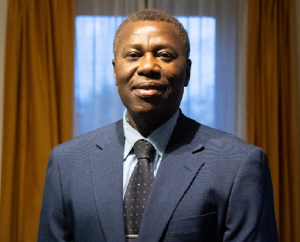Forty percent of the Keta Sea Defence Project for reclamation of 275 hectares of land eroded by the sea has been completed.
Togbe Kporku III, Chief of Alakple and Project Director disclosed this to President John Agyekum Kufuor and his entourage when they inspected the project site at Havedzi on Saturday to round off his maiden three-day official visit to the Volta Region.
He said the project was progressing on scheduled but likely to be delayed by two major problems, which were the full payment of government's component and re-settlement of the people affected by the project.
Togbe Kporku said the project being undertaken by Messrs Great Lakes, Dredge and Dock Company of the United States (US) in conjunction with Messrs W.F. Baird and Associates was estimated at about 84 million dollars.
He said the Exim Bank of US was providing 72 million dollars and out of the government's counterpart funding of 12 million dollars, nine million dollars had been paid with the remaining three million dollars due for payment by the end of January, this year.
He said the contractors have threatened to stop work unless there was a guarantee of payment. The Project Director said about 10,000 people in Havedzi, Vodza, Adzido and Kedzi were to be re-settled to allow low lying areas now inhabited to be reclaimed.
The cost of re-settlement was estimated at about 4.5 million dollars about 32 billion cedis. President Kufuor, who was impressed about the progress of work, said it was a "marvellous piece of engineering work put into good economic and social use of the area, not only for the benefit of the people of Keta and Anlo but the entire nation.
Work on the project, which began on December 14, 1999 and expected to be completed on February 13, 2004, was to protect existing and planned development between Keta and Horvie from erosion.
It would also stabilise the shoreline to prevent inundation of inhabited areas by the sea, to reclaim land from the Keta lagoon for habitation and to prevent flooding from the lagoon.
Other benefits from the project include an eight-kilometre long dredged channel about 11 metres deep from Keta to Havedzi for water transport and other fishing and tourism.
A total of about 11 million cubic metres of sand and one million tonnes of rock were required for the project.
General News of Sunday, 6 January 2002
Source: gna












